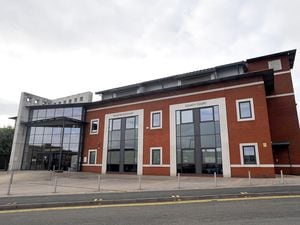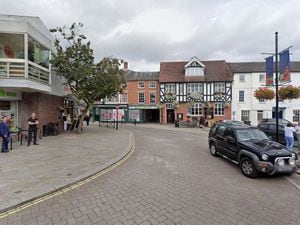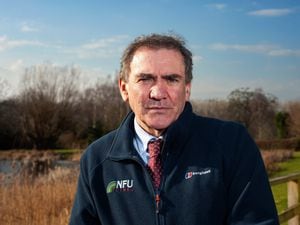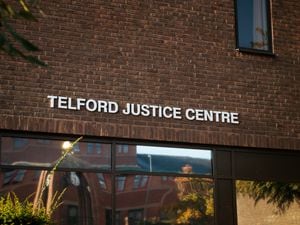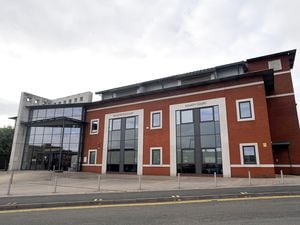Eventful past of The Fort, Hells Angels' base in leafy suburb of Wolverhampton
Half-timbered in the mock Tudor style once seen as a suburbia signal of success, the expansive property conjured images of middle class family contentment.
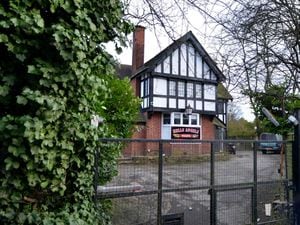
On Sundays, it was expected to perspire the scents of a gently basting roast and freshly clipped privet.
Its proud owners possibly wrestled with such triumphant titles for their abode as The Gables or The Laurels, even Dun Accounting.
Instead, the detached building, in Wolverhampton’s Penn Road, was known locally as The Fort – and its rooms were crammed with secrets. Sinister secrets.
Times have changed dramatically. The house is part of the community in Penn and does much good work within it. The skull and wings insignia still flies high above the ramparts, but the colours are no longer scuffed and stained.
The wheels that brought the world’s most feared cycle gang from west coast America to the Black Country have turned full circle.
But the past will persist, and it is, at times, grimy.
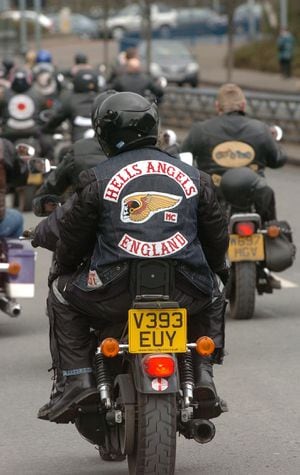
In the darker days of the city’s grease-covered steel links with the Hells Angels, this imposing home was the brotherhood’s base, its social club. It still is, but there’s more bonhomie behind the brickwork.
The demons that lurked within its walls began to be exorcised in October, 1992, following the gangland execution of Michael 'Long Mick' Rowledge, a high-ranking member of the Wolverhampton chapter and Fort resident for eight years.
At his funeral, a long cortege of choppers, ridden by Angels from across the country, followed Long Mick’s hearse from Penn Road to Handsworth Cemetery. That petrol-head parade reflected the respect Mr Rowledge commanded.
Many questions still remain unanswered three decades after the 31-year-old was gunned down while he sat in a high performance car parked close to Liverpool’s Aintree Racecourse.
But the “hit” shone a blinding spotlight on The Fort.
Officers who entered the building encountered high walls: walls of bricks and mortar and silence. The silent barriers proved the most impregnable.
Mr Rowledge was a hard, uncompromising individual. The divorced father-of-two had a conviction for threatening behaviour and was awaiting trial for his alleged part in a pub brawl when the gunman struck.
At the time, one biker broke ranks to tell me: “Mick would do things others wouldn’t.”
That recklessness caught-up with the victim on October 7, 1992, when four bullets were pumped into his chest as he waited, with two others, in a blue Escort.
Shocked shoppers, emerging from a neighbouring supermarket, watched the young gunman, his face covered by a balaclava, race from the scene in a convertible driven by a woman described only as “auburn-haired”.
It soon became apparent Mr Rowledge had not travelled 90 miles from his Black Country home on a sight-seeing whim.
Knives and other weapons were found in his car.
Merseyside Police initially pondered whether the murder was the culmination of bad blood between Wolverhampton’s Hells Angels and rival Birmingham-based biker gang, the Cycle Tramps. Six months before, three Tramps were injured in a drive-by shooting.
But hardened detectives were sceptical such scores would be settled so far from home.
A disputed drugs deal seemed the only plausible explanation. Mr Rowledge – a fearless individual prepared to go where other would not – was the enforcer sent to collect a £140,000 debt owed to “Lars”, a Dutch-based Mr Big, Liverpool Crown Court was told.
Hauntingly, a cockerel crowed as a growing press pack gathered outside the Fort’s locked steel gates.
An empty beer keg lay on the drive, a rusting mower had been abandoned on the lawn. Caravans and motorcycles cluttered the open ground.
One biker strode towards the knot of reporters and said: “We are all very shocked and upset. We have been given no information by police. All we know is what we’ve heard and read in the media.”
A nearby resident described the Angels as courteous, polite neighbours. She said: “When the children have asked for their ball back, there’s been no trouble, no harassment.”
But the case had created a breach in the Fort from which secrets began to seep through.
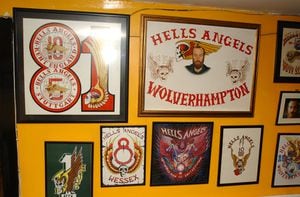
In 1995, four people – one a 44-year-old woman – were convicted of conspiring to murder Mr Rowledge and received a combined sentence of 46 years.
Florence Williams received 10 years, Gerard Duncan, aged 40, eight years, 28-year-old Thomas Dures 13 years and brother Stephen Dures, 35, 15 years.
The gunman – allegedly paid £30,000 – has never faced justice, although a 37-year-old was cleared of murder.
Public perception, more precisely, public tolerance, towards the Fort and its residents shifted following Mr Rowledge’s murder.
A 1998 combined operation by West Midlands Police firearms unit and The Met saw the barricades smashed down, courtesy of a mechanical digger.
The plant machinery was called in after those inside failed to respond to loud-hailer requests. It later emerged there was one man, two women and an 18-month-old child inside.
Armed officers – probing the death of two men, stabbed during a 20-strong brawl at a Battersea rockers’ reunion – were hindered by doors and windows reinforced with metal posts.
A de-activated World War Two Bren gun and ecstasy tablets were seized during the seven-hour search, but no arrests made.
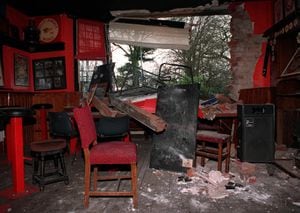
It was one of five dawn raids carried out in connection with the Battersea bloodbath. A spokesman for the Metropolitan Force said: "Police believe the apparently pre-planned attack in January was the result of continuing friction within the biking community."
Friction. Wolverhampton Hells Angels’ machines may have been well-oiled, but their past is pitted with friction, with violent rivalry, feuds and vendettas.
That tension spewed out during sickening scenes of mass violence in the arrivals lounge of Birmingham Airport on January 20, 2008.
It was a brutal, 30-strong battle in the war between the Angels and sworn enemies the Outlaws. Six months before, Gerry Tobin was gunned down as he rode his Harley from the Bulldog Bash biker gathering in Long Marston, Warwickshire.
Seven men – almost the entire South Warwickshire Outlaws chapter – received life sentences for his murder.
Only luck prevented loss of life at Birmingham Airport as those caught up in the mindless mayhem fought with an arsenal of weapons that included a machete, club, knuckle-dusters, three hammers and a cleaver.
The trouble began with a spat between rival gang members on a flight from Alicante. It ended with two men stabbed and another treated for serious head wounds.
In the free-for-all’s aftermath, a police source confided: “We heard reports that part of an ear was found in the car park. There was blood everywhere."
Three Hells Angels from the Wolverhampton area each received six year sentences for their part in the riot.
A fourth, Mark Larner, who gave his address as Penn Road, Wolverhampton, fled to South Africa. On returning to the UK, the 47-year-old presented himself to police in Bristol and was later also sentenced to six years, plus three months for skipping bail.
Four Outlaws – none under the age of 40 – were found guilty of rioting and received six years.
Judge Patrick Thomas QC touched on the code that bound such men, the allegiance to colours and cloth emblems – and the menace that presented.
He said: “While any individual remains adherent to a biker club to the extent that he sacrifices his own moral judgment, that presents a real danger to the public of causing serious harm."
In Wolverhampton, the Hells Angel movement has long shed its menace.
Whisper it, but the leathers and liquor image has been replaced by a near suited, corporate approach to public relations.
Website hellsangelswolverhampton.com advertises a Christmas party, there’s even an online shop selling, among other fashion items, “Support the Fort” hoodies. On the page, denim appears to be de rigueur no longer.
There’s even a guestbook, which seems something of an anomaly for a brotherhood once shrouded in secrecy.
There are charity events, including an annual Bonfire Night party attended by families from across the neighbourhood.
The fumes and fanaticism have been replaced by a public mantra of community and family.
The Fort, once steel-enforced, is, at times, a bouncy castle.
Yet the past cannot be erased. The blood can never be totally scrubbed clean.
And The Fort will never surrender all its secrets.

